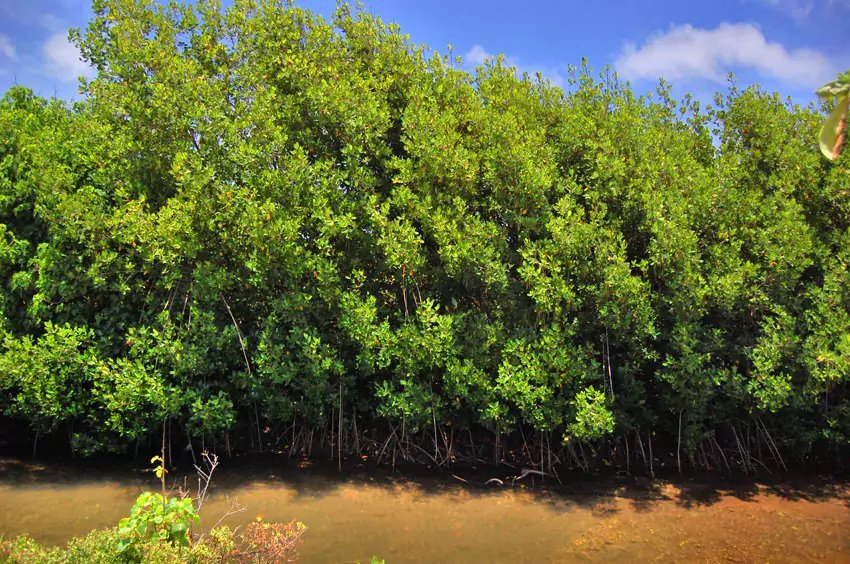Mangrove Tree

Mangrove Tree Overview
Mangrove trees grow in places where other trees would never take root, such as in seaside marshes, in saltwater or brackish water. To avoid drowning, the mangrove grows stilt roots above the water line. These arching aerial roots form a dense thicket.
Mangroves have the ability to stabilize a shoreline by collecting silt and soil and for this reason were brought to Hawaii in 1902. They were first planted to stabilize Molokai's mud flats in the southwestern part of the island. Now mangrove trees can also be found on Kauai (for example along the Wailua River), on Oahu (for example on the Kaneohe Bay shoreline), on Lanai and the Big Island.
Frequently Asked Questions
Where do mangrove trees grow?
Mangroves thrive in coastal areas with saltwater or brackish water, such as marshes, riverbanks and tidal zones.
Why do mangroves have aerial roots?
Mangroves grow stilt-like aerial roots above water to obtain oxygen and prevent drowning in their waterlogged habitats.
How do mangroves help protect shorelines?
Mangroves trap silt and soil with their roots, reducing erosion, buffering storm surges and helping to stabilize coastlines.
Where in Hawaii can I see mangrove trees?
You can find mangroves on Kauai's Wailua River, Oahu's Kaneohe Bay, parts of Molokai, Lanai and the Big Island's coastal zones.
When were mangroves introduced to Hawaii?
Mangrove trees were introduced to Hawaii in 1902 to help stabilize coastal mudflats, especially on Molokai.








